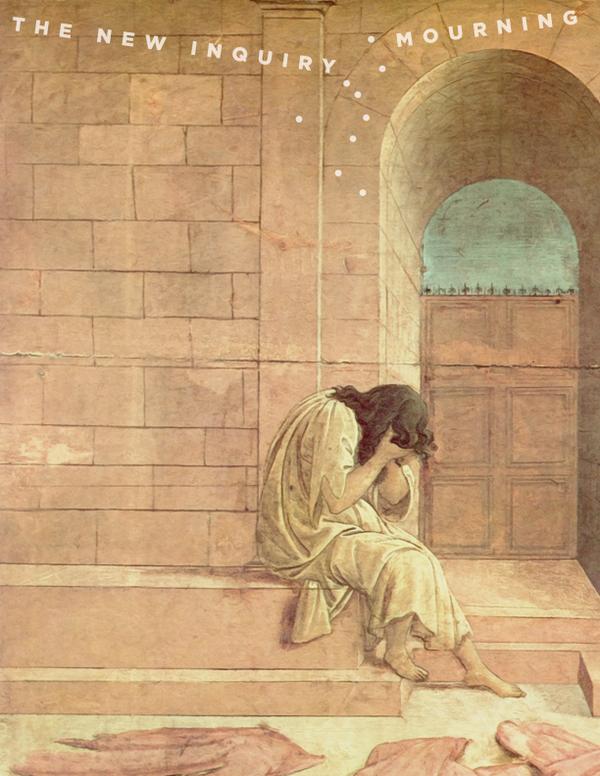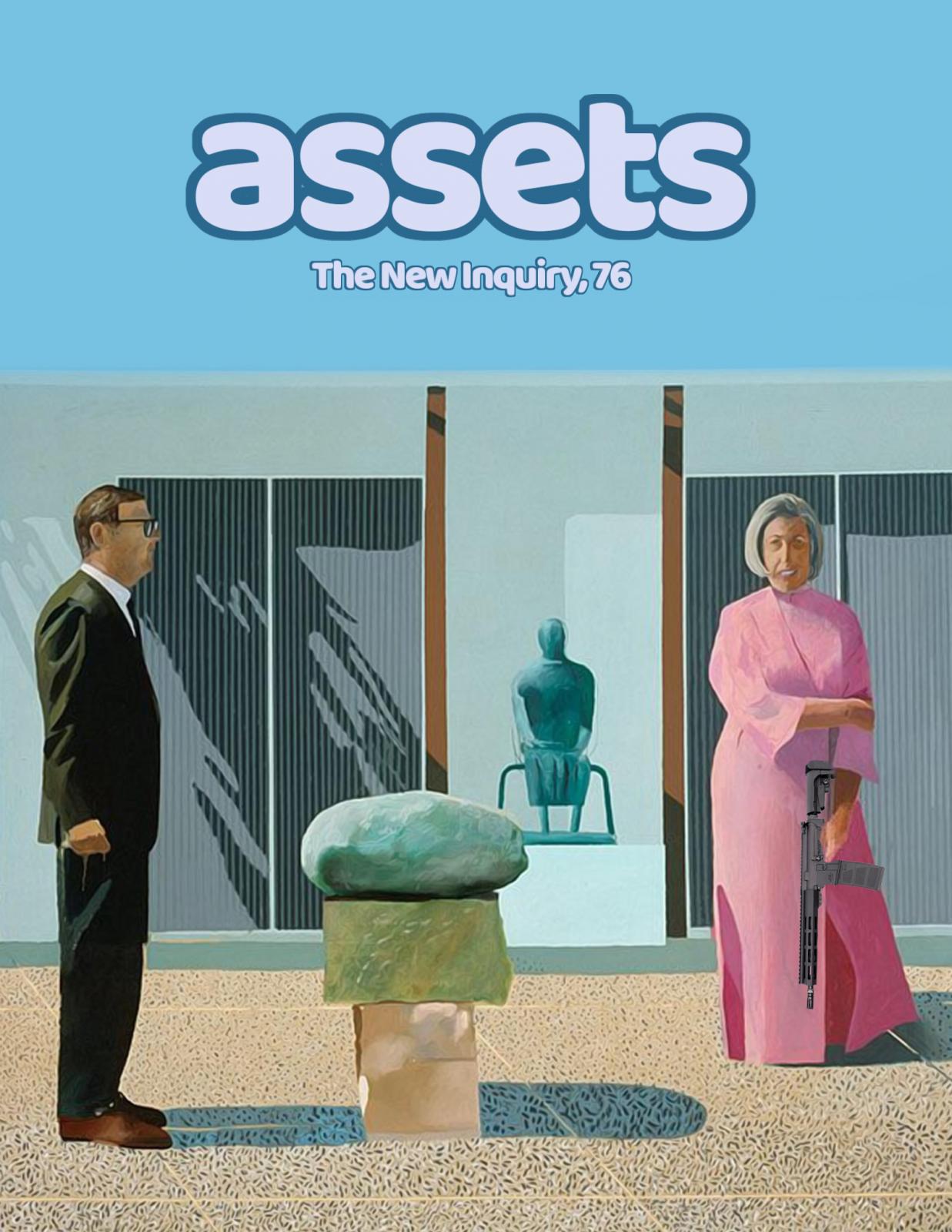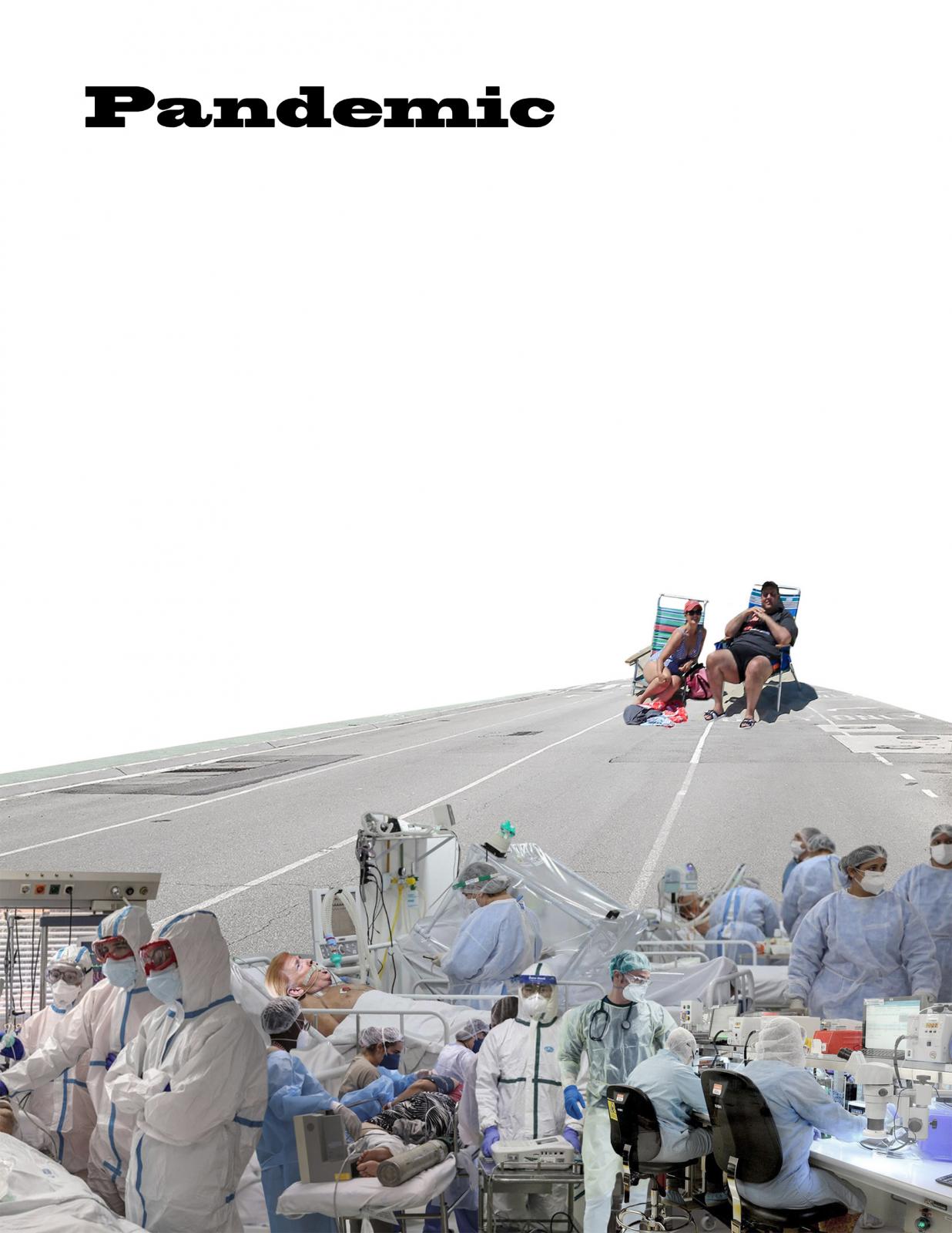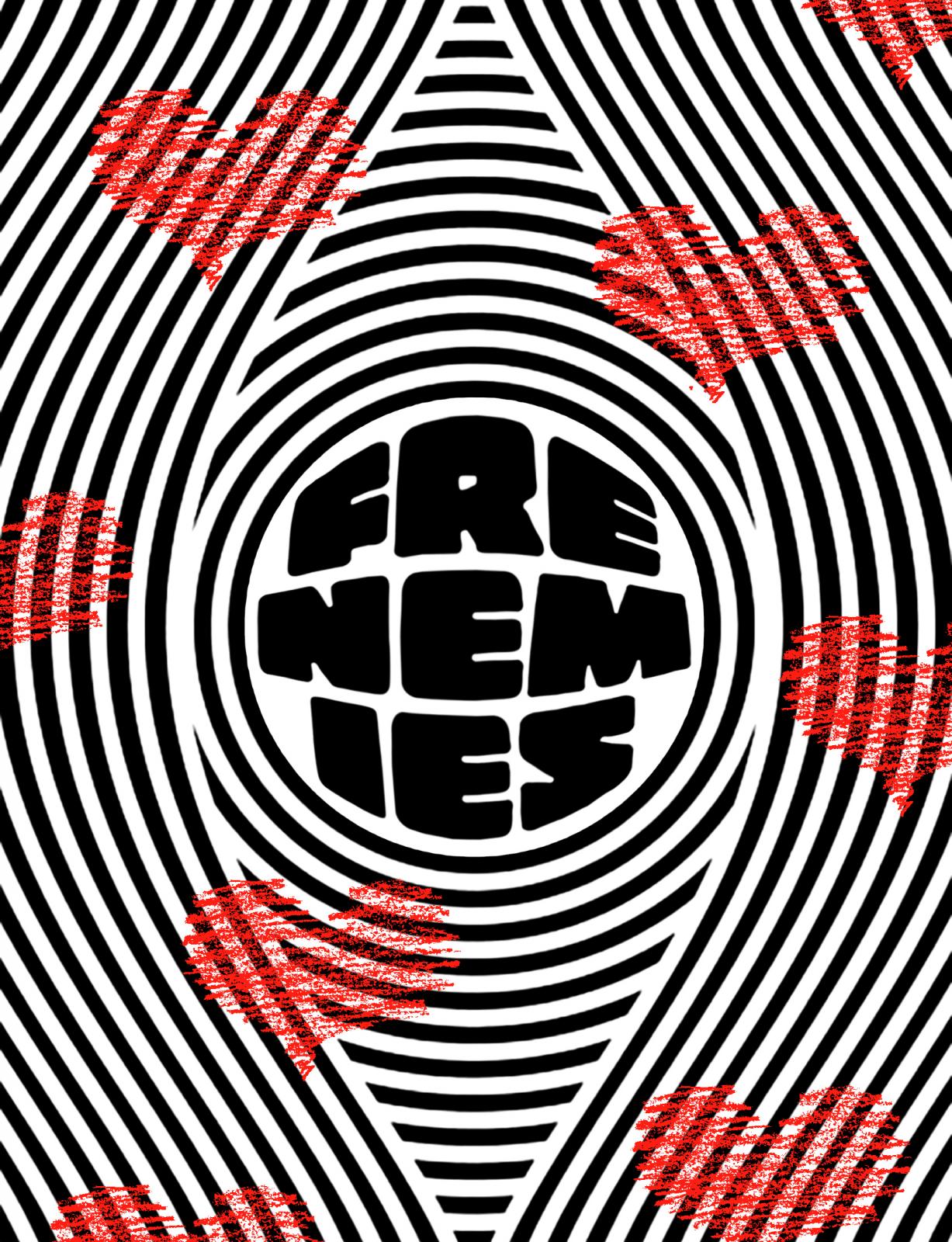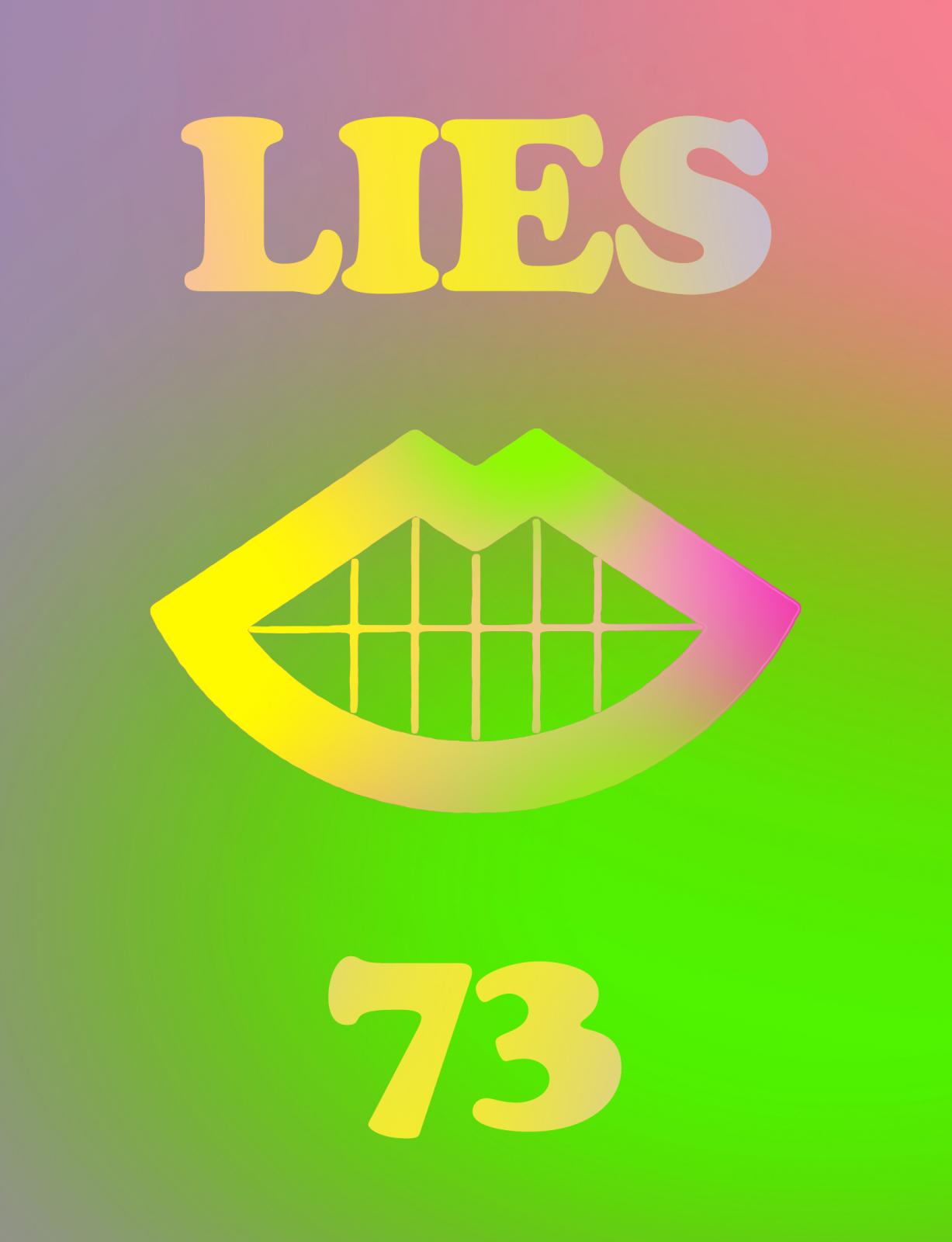Mourning
Editors' Note
At the height of the northern summer, with the days only just starting to contract toward winter, the theme of death seems a little unseasonal. If there is “a time to die,” it should be, say, December, when the cold does its deathly work on nature. But of course, death comes whenever, always in season and always out of season.
Death can be styled as grand and gothic, but its human avatars are more prosaic: fresh-faced Israeli soldiers, for example, sleek with health and rights, proclaiming their triumph over mutilated bodies. That has been the image-track to this summer, so far: the wide eyes of childhood set above mangled limbs. These deaths are not ours, but they seem to belong to us in another way, while we live in the country that paid for the weapons that dealt these deaths. We give ourselves the task of witnessing the deaths we can’t live, without always knowing what this witnessing is for.
There is no more tired or absolute epistemological limit than that on the knowledge of death. We only ever encounter death’s secondary effects: its disruptions of life, its deprivations, or its wakes.
From inside the charmed circle of white bourgeois America, where some of us have sometimes lived, and where death can be staved off until old age, it’s easy to mistake death for something absolutely other, to be marvelled at or longed for. But, as Sabrina Alli writes in her review of Robert Ferguson’s book Inferno, for those black and brown people whose lifetimes provide the raw material for the American prison industry, various forms of death are conditions of life.The prison industry renders death productive, but more than just money can flow from the dead.
In an interview with historian Thomas Laqueur, Hannah Black floats the idea that human culture itself can be thought of as an elaborate work of mourning, our lives beholden to an original loss. Laqueur’s new book on death unearths the work that the dead do for the living, seeing funerary practices as a rare real instance of shared humanity, and colonialism as a process of murdering ghosts as well as the people who they live among. Despite the rationalist disenchantment of the dead, even Marx’s corpse is treated as if it is still the thoroughgoing materialist philosopher it once housed. The dead talk to us even if we disavow them, and we are constantly returning to their comforting presence.
But even ghosts don’t live forever. The news cycle will move on and turn its attention to new deaths. Perhaps for once we will see mainstream news media cover routine American deaths such as those of black people at the hands of the police, which a 2012 report estimated occur on average about once every 28 hours. Statistics like these are the public life of death, but death has a private life too. From time to time we are called to witness deaths that are painfully close to us, and someday everyone will live a death of their very own, final proof of the life it will end. Against the brutal calculation of life’s value—one Israeli soldier for 30 Palestinian men, for example—the force of each particular death insists on its own specificity. The corpse rebukes the politician.
The 28-hour-day of routinized murder subtends and distorts the 24-hour day of the news cycle, just as the images of the dead elsewhere seem to demand an excess of attention beyond what we can provide. In the small hours, awake and thinking of what might be dead or alive inside us, we end up reading about someone else’s real and final death. None of those deaths fit comfortably inside the mind, but writing and reading can feel like a bridge toward them.
The same social media platforms that bring us grisly news track our days on the earth, not according to the 24-hour cycle but in the vast and overlapping expanses of time and calculation explored by Manuel Abreu in an essay on lethal algorithms. Our daily communications become a mass of data mobilized by state agencies to kill; the NSA turns the living work of life and death into the deathly work of surveillance.
Some people only have to die once, but others die all the time. In her essay on gender and Freud’s concept of the death drive, Hannah Proctor argues that gender is a deal struck with death: From the heavily made-up flapper to the stone butch, performances of womanhood suggest that the line between woman and lifeless thing can be problematically blurry. Like organic life coats itself in death to go on living, gender encases its wearer’s body in a lifeless carapace that is cold to the touch.
The proper way to touch dead bodies is highly charged, but as with all taboos the scope of the strictures is usually smaller than imagined. Leah Finnegan writes of the seemingly contemporary funeral selfie, a phenomenon which invited a minor moral panic earlier this year, as actually demonstrating a measure of continuity with earlier modes of handling dead bodies within culture. Unconsciously mirroring techniques of posing corpses from the advent of photography, the only disrespect the funeral selfie shows is toward other performative displays of grief, which imagine themselves to hold the sole position of mourning correctly.
Sharing space with the dead must be controlled through ritual, but sharing time with them is harder to assimilate into order. In “Stoppage Time,” Evan Calder Williams meditates on Teju Cole’s “time of the game,” watching a World Cup match in a bar with strangers proximate and global, and learning of an Israeli attack on one other such bar in Khan Younis, which killed nine fellow spectators. The time of war, too, yokes our days to each other’s vulnerability to death, and brings bodies into a kind of communion with others that will never touch or pass.
No writing on the subject of death can rehabilitate it, but exhuming its figure to see what lies beneath enriches our understanding of that more slyly shadowy category, life. A good death is the deal life made with us, or vice versa: a world of intensities and sensations, for the price of its end. But the ubiquity of colonial and capitalist murder breaks the pact between life and death by rendering both bleakly arbitrary. The open eyes of corpses are looking for both the life and the death that should rightfully have been theirs, and in these essays, in different ways, we are looking for it too.
Featuring
-
Vol. 31 Editor's Note: Mourning
-
Death and the Maiden
-
Death Stares
-
The Journalist and the Suicide
-
A Reformist in Hell
